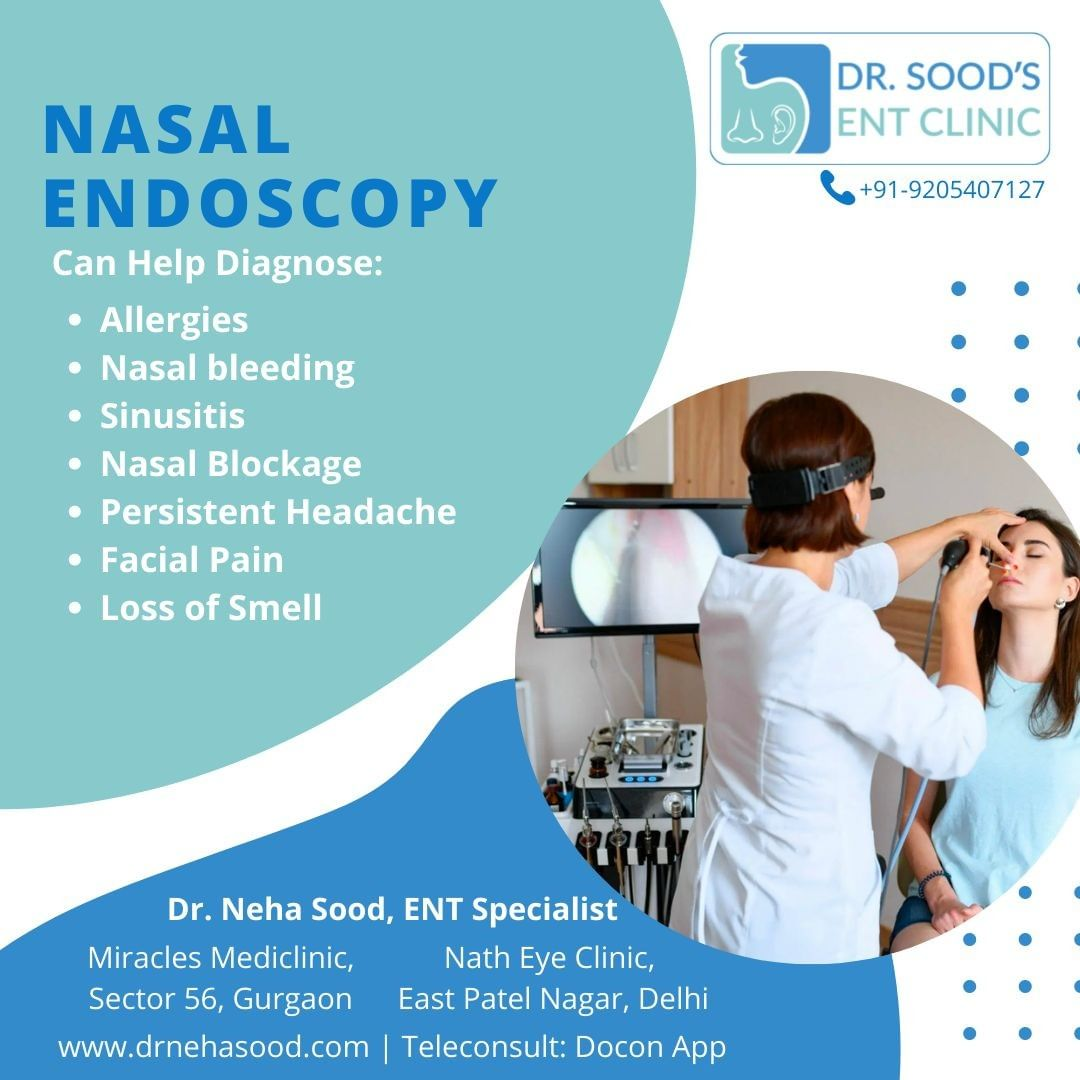Tue, Feb 6, 2024
Read in 4 minutes

What is Nasal Endoscopy?
Endoscopy is a diagnostic medical procedure that’s minimally invasive. Physicians use it to view interior surfaces of a tissue or organ, allowing them access to certain cavities of the body they normally can’t see while performing a standard examination procedure.
Nasal endoscopy, also referred to as Rhinoscopy, is typically performed in an otolaryngologist’s or ear, nose, and throat office where they have a direct, high-quality and magnified vision as they evaluate your sinus and nasal passages.
A nasal endoscope is an instrument that consists of a rigid, thin tube with fiber-optic cables. It connects to a video camera and light source where magnified images project onto a screen. The otolaryngologist then captures and records the endoscopic images to document for each patient.
During a nasal endoscopy procedure, the ear, nose and throat physician inserts the endoscope into your nose and guides it through your sinus and nasal passages as they view the images of the area they’re examining. The procedure helps with diagnosing and treating different health conditions. Sometimes, the physician may use small tools to perform certain tasks like gathering tiny tissue samples also known as nasal biopsy or cauterization for nasal bleeding
Indications for a Nasal Endoscopy
Nasal endoscopy indications may include:
• Identifying disease in patients who are suffering from sinonasal symptoms, like facial pressure or pain, mucopurulent drainage, decreased sense of smell or nasal congestion or obstruction or nasal bleeding
• Evaluating unilateral disease.
• Evaluating the medical treatment response in patients such as purulent secretions, inflammation and mucosal edema or resolution of polyps after treatment with antibiotics, antihistamines, oral steroids or topical nasal steroids.
• Evaluating patients with impending complications or complications of sinusitis.
• Debriding and removing mucus, crust and fibrin from blocked sinus and nasal cavities following functional endoscopic sinus surgery.
• Obtaining a purulent secretion culture.
• Evaluating potential pathology recurrence after functional endoscopic sinus surgery (FESS).
• Evaluating the nasopharynx for Eustachian tube problems, lymphoid hyperplasia and nasal blockage.
• Evaluating and taking a biopsy of nasal lesions or masses.
• Evaluating anosmia or hyposmia.
• Evaluating cerebrospinal fluid leak (CSF).
• Evaluating and removing nasal foreign bodies.
• Evaluating and treating epistaxis.
Findings of a study show office-based biopsy and nasal endoscopy are an important and safe diagnostic tool to evaluate sinonasal neoplasms. This procedure is normally safe and gives physicians the diagnostic information they require to make changes to treatment decisions, if needed.
Side Effects of Nasal Endoscopy
Overall a nasal endoscopy is a relatively low-risk procedure. However, as with any procedure, there’s always the chance of potential nasal endoscopy side effects or complications, such as bleeding and mucosal trauma, especially in those who already have an increased risk for bleeding like those taking anticoagulant medicines (Coumadin, Plavix, etc.) or aspirin.
You could experience adverse reactions to anesthetics or topical decongestants received before your procedure. Therefore, your healthcare professional will verify if you have any allergies before they administer a topical medication.
Before your procedure, make sure you ask your physician if you need to stop taking any medications, such as blood thinners. Your physician will likely provide you with specific instructions about what you should and shouldn’t do before your procedure. For instance, you may be asked to refrain from eating and drinking for a certain period of time before your procedure.
Rarely is the procedure painful, however, if you have an unusually narrow nasal cavity or swollen nasal lining, you could experience some mild discomfort. Your otolaryngologist will spray your nose right before your nasal endoscopy to minimize discomfort with a:
• Local anesthetic, temporarily numbing your nose and helping to minimize your likelihood of sneezing due to sensitivity.
• Nasal decongestant, gently reducing any nasal membrane swelling you have to provide the endoscope with an easy passage.
They may use a pediatric-sized endoscope or additional numbing spray to prevent and ensure there’s no discomfort.
